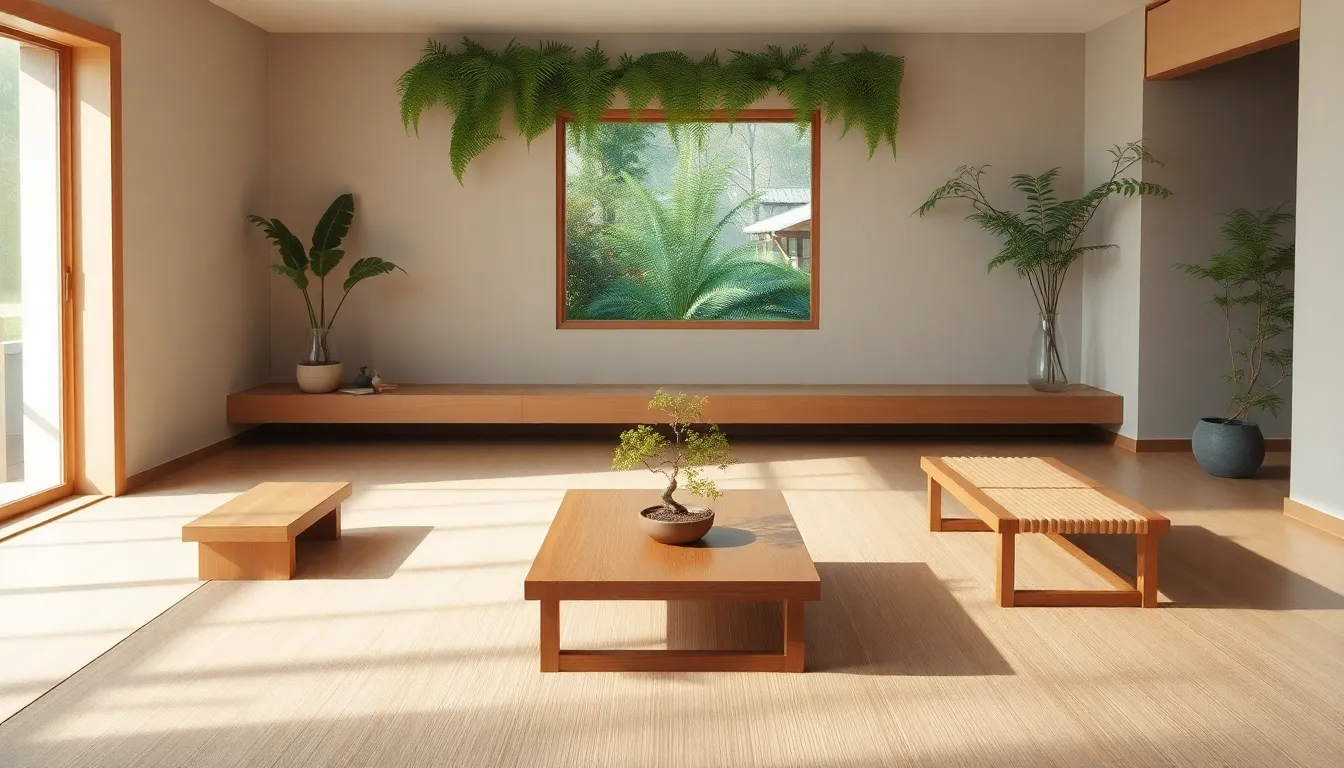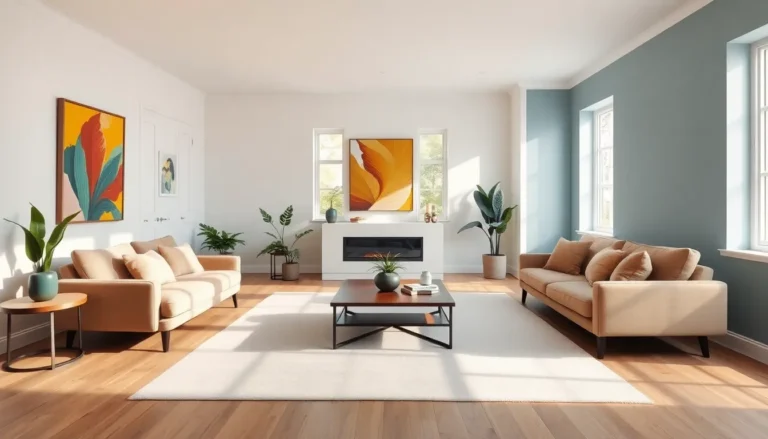Ever walked into a living room and felt a wave of peace wash over you? That’s the magic of Japanese design principles. In an age where clutter reigns supreme, the Japanese style offers a refreshing escape. Imagine serene spaces filled with natural materials, soothing colors, and a magnificent blend of functionality and aesthetics. Get ready as we jump into the brilliant world of Japanese living rooms, where less is not only more but is also breathtakingly beautiful.
Table of Contents
ToggleThe Essence of Japanese Design Principles

Japanese design is steeped in philosophy. At its core lies the idea of harmony, simplicity, and balance, celebrating the beauty of life’s imperfections, known as wabi-sabi. This aesthetic embraces natural elements and prioritizes craftsmanship over mass production. Minimalism isn’t just a trend here: it’s a way of living. Rooms are thoughtfully curated to create a sense of calm, allowing for one to connect with their space and oneself. It’s about breathing room, both in the air around and in the mind.
The design principles encourage open spaces, often void of unnecessary embellishments. This does not mean the rooms lack personality. In fact, each item, whether it’s a piece of art or a simple vase, often tells a story, highlighting the owner’s journey in life. The combination of functionality and charm creates environments that are both purposeful and inviting.
Key Elements of Japanese Living Rooms
When it comes to designing a Japanese living room, several key elements stand out.
Color Palettes and Materials in Japanese Interiors
In Japanese interiors, colors play a crucial role. Natural hues dominate, think earthy browns, soft greens, and calming whites. These colors draw inspiration from nature, creating a sense of tranquility. Materials utilized often include wood, bamboo, paper, and stone, each adding a unique texture to the space. The beauty lies in how these materials age. For instance, untreated wood develops a beautiful patina over time, indicative of its journey.
Furniture Selection and Arrangement for Balance
Furniture is selected with intention. Low-profile furniture pieces, such as tatami mats or simple wooden benches, allow for fluid movement throughout the space. They invite interaction and promote a relaxed attitude. Arrangement is key: pieces are placed to encourage balance and flow. This might mean situating a couch opposite a coffee table or leaving ample room around a central feature, like a beautiful window or an indoor plant. The goal is to create a cohesive look that feels connected and spacious.
Incorporating Nature: The Role of Indoor Plants
Bringing the outdoors in is a hallmark of Japanese living rooms. Nature plays a pivotal role in creating a soothing environment. Indoor plants, whether it’s a lush fern or a delicate bonsai, help purify the air and elevate moods. They serve as a living art piece, effortlessly blending into the space.
Also, the strategic placement of plants can draw the eye and create focal points in a room. For example, a tall bamboo plant in a corner can soften the edges of a room, while small succulents on a windowsill can bring life to an otherwise plain area. The goal is harmony, plants shouldn’t overwhelm but enhance the existing beauty of the space.
Creating Multi-Functional Spaces
Japanese living rooms are masters of versatility. Each inch is utilized for functionality, often accommodating various activities without feeling cramped.
Popular Styles of Japanese Living Rooms
From traditional to modern adaptations, popular styles like the shōji (sliding door) or the incorporation of futons allow spaces to transition smoothly from day to night. They can adapt for lounging during the day and transforming into a cozy sleeping area at night.
Traditional Tatami Rooms
Tatami rooms epitomize this adaptability. Often featuring woven mats, these spaces invite guests to sit on the floor, fostering a sense of connection. It’s not just about aesthetics: it’s about creating a welcoming atmosphere for family and friends to gather.
Modern Japanese Aesthetics
Modern interpretations of Japanese living rooms take the best of traditional elements while incorporating contemporary flair. This might manifest as an open floor plan, where lines between rooms are blurred, enhancing the feeling of space and freedom. Furniture pieces may be sleek and minimalist, often made from sustainable materials, reflecting today’s eco-conscious mindset while preserving the timeless beauty of Japanese aesthetics.
Also, technology is integrated subtly without overwhelming the room’s serene atmosphere. Smart features, like automated lighting or temperature control, accommodate modern living without sacrificing the genuine warmth that characterizes Japanese style.
Tips for Achieving a Japanese-Inspired Living Room
- Embrace Minimalism: Declutter your space. Select a few meaningful pieces that resonate with you.
- Opt for Natural Materials: Use wooden furniture and natural textiles. Bamboo and rice paper can add a textural element.
- Choose a Soft Color Palette: Paint your walls in neutral tones, allowing pops of color only through art or small decorative items.
- Incorporate Indoor Plants: Bring life to your room with plants. Not only do they purify the air, but they also add a fresh, vibrant touch.
- Prioritize Functionality: Ensure your furniture layout promotes conversation and flow. Consider multi-use pieces like coffee tables that can double as storage.




